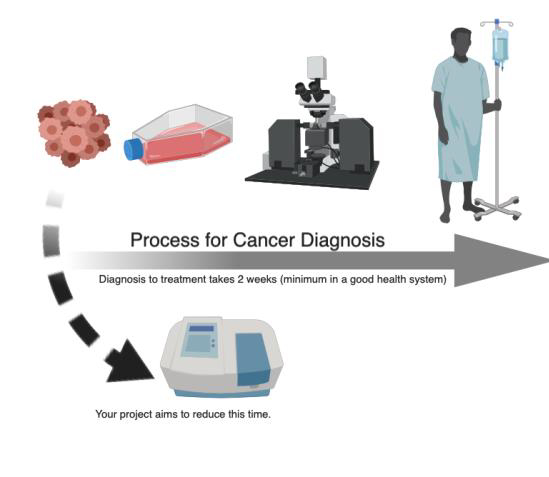The aim of this project is to evaluate the feasibility of developing a rapid diagnostic method for cancer cell recognition using infrared spectroscopy.
James Chapman, Paul Ramsland and Daniel Cozzolino
Aim
The aim of this project is to evaluate the feasibility of developing a rapid diagnostic method for cancer cell recognition using infrared spectroscopy. This method will profile different stages of cancerous cells, based on their molecular composition and structure by the use of IR spectroscopy. The development of this method will lead to more affordable and non-invasive diagnosis (far future-tech) for the rapid screening of individuals with cancer, providing information on the type of cancer and its stages.
Outline
If a patient is suspected of having cancer, a clinician typically orders certain blood tests or other laboratory tests, such as the analysis of urine or a biopsy of the suspicious area to help guide the diagnosis. With the exception of blood cancers, blood tests cannot tell if cancer is present or not, it will take a biopsy or scan in order to ascertain whether cancer is present or not. During a biopsy, a clinician will remove a small amount of tissue to examine under a microscope by a surgeon, a radiologist, an oncologist, a gastroenterologist, a pathologist for example.1 The level of invasiveness will depend on where the suspect cancer is, and therefore results in varied recovery times. For example, a test for bowel cancer,2 although specific to the specific situation, may require a colonoscopy and biopsy. The time taken from discovering the suspect cancer to treatment is often varied and can sometimes be a defining factor for life or death, Figure 1.
 Figure 1. Process for cancer diagnosis: Diagnosis to treatment takes two weeks (minimum in a good health system). Your project aims to reduce this time.
Figure 1. Process for cancer diagnosis: Diagnosis to treatment takes two weeks (minimum in a good health system). Your project aims to reduce this time.
Rationale
In this project, you will be using your knowledge over the duration of your degree to develop a rapid and non- invasive screening method for cancer diagnosis. You will be using a range of matrices which contain markers indicative of some cancer types in order to assess the cancer cells. You should have an interest in method development with a focus on FTIR and UV-Visible spectroscopy.
(1) Sidransky, D. Nucleic acid-based methods for the detection of cancer. Science 1997, 278 (5340), 1054.
2) Mandel, J. S.; Bond, J. H.; Church, T. R.; Snover, D. C.; Bradley, G. M.; Schuman, L. M.; Ederer, F. Reducing mortality from colorectal cancer by screening for fecal occult blood. New England Journal of Medicine 1993, 328 (19), 1365.


